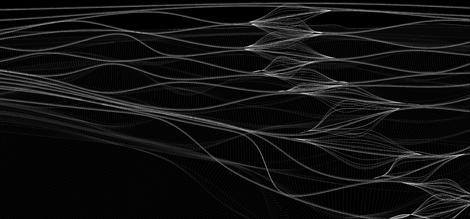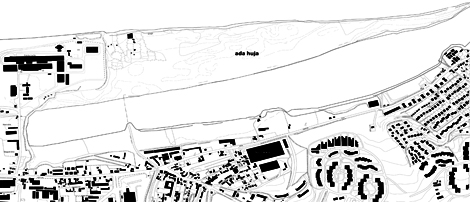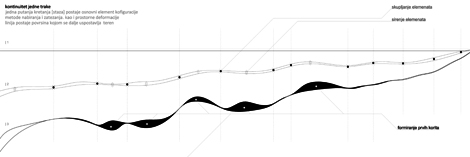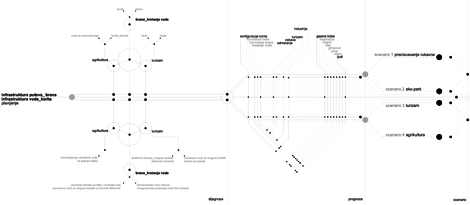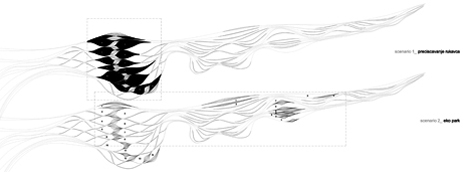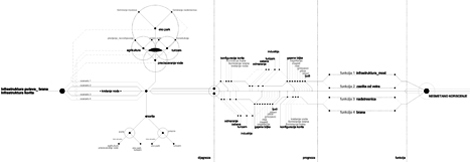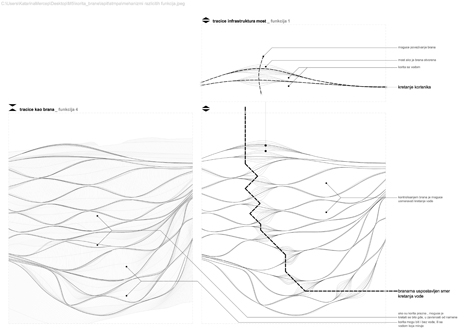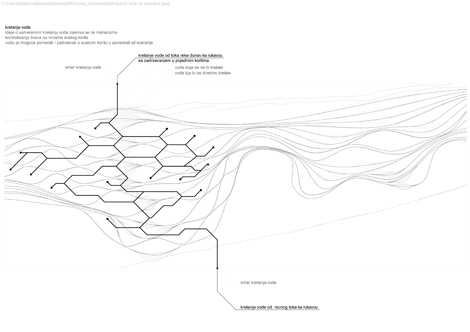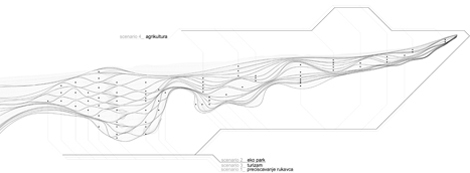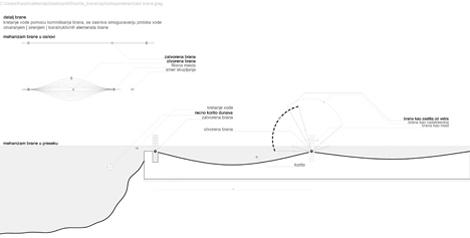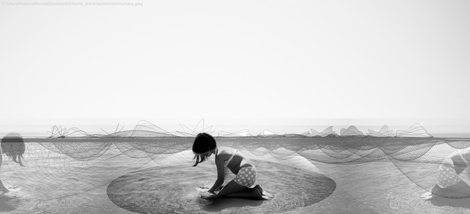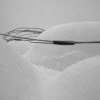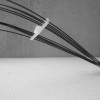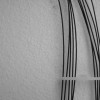The design strategy is based on the regime of water flow across the surface of peninsula. The water is channeled through purpose designed network of artificial river streams and regulated with a set of barriers in the form of mini river dams. A system of river beds and dams together provide a control mechanism of material processes unfolding on the site. Fluctuating conditions of the ground surface are then associated with varied scenarios of use. The design strategy is than set around the following protocol: a. connect or disconnect to establish network of channels as river streams; b. open or close to introduce dams at critical nodes of the river bed network; and c. alternate between connect/disconnect and open/close to explore different scenarios. A series of schematic drawings were made to illustrate the pool of possibilities. This was followed by the production of the physical models to test formal and organizational properties of the established system. The initial stages of the project lifecycle are associated with the cleansing process whereby newly introduced water flows will help rinse layers of the polluted soil. This is followed with the bio remediation process based on the introduction of plants and microbes which are capable of digesting hazardous materials over time in a process known as bioremediation. Willow trees and several species of crops are known to be particularly effective in this respect. In several years or even decades after the first intervention, the decontaminations processes will have started to yield better environment. The actual use of the peninsula is planned only in the later stages of the project. Some of the water channels will be dried out to provide a system of pedestrian routes and dams will turn into crossings within such system.
location
configuration
scenarios
functions
section
analysis
plan
[dam. riverbed]



